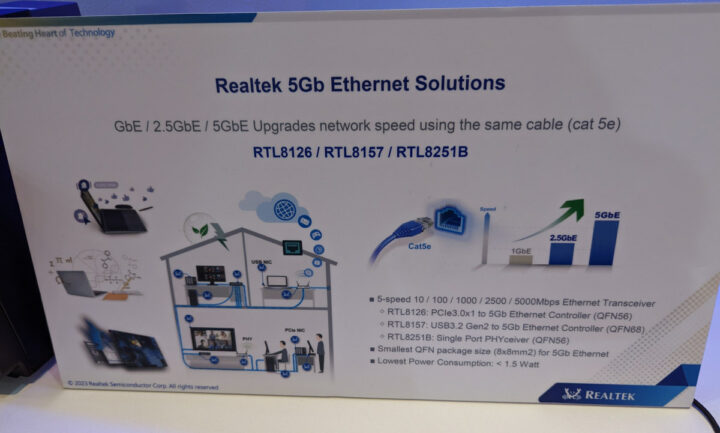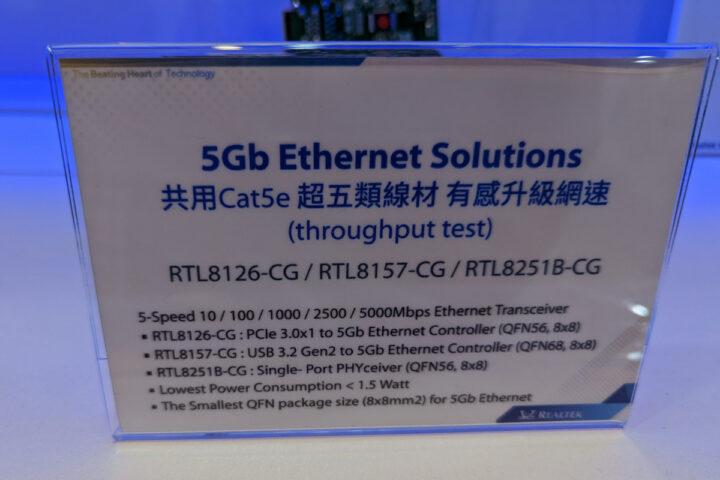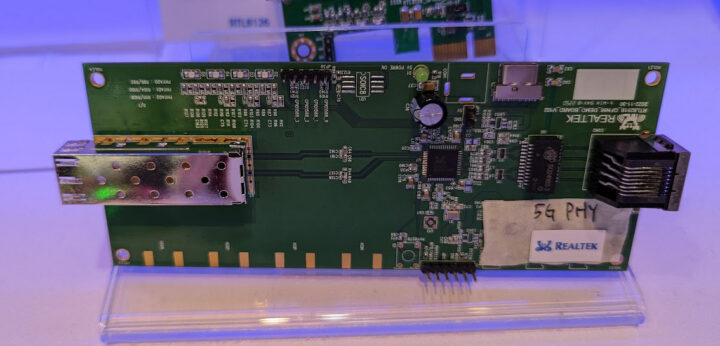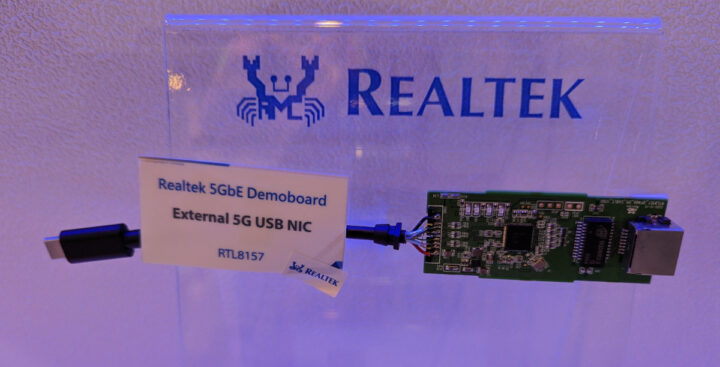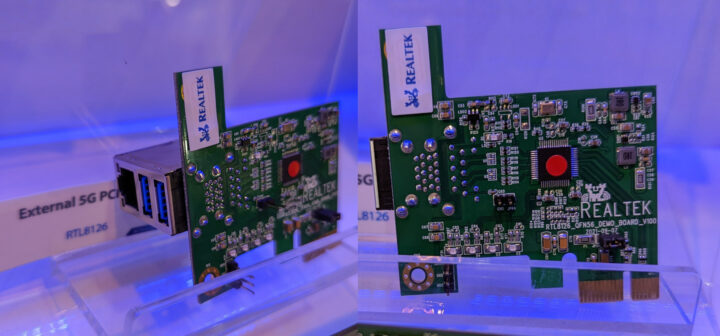I only upgraded my local network to 2.5 Gbps Ethernet last year, but 5 Gbps Ethernet is soon coming to the home as shown by Realtek at COMPUTEX 2023 with demonstrations of their RTL816, RTL8157, and RTL8251B 5GbE chips that were initially unveiled at CES 2022.
The RTL8126-CG is a PCIe 3.0 x1 to 5GbE controller offered in a QFN56 8x8mm package that succeeds the RTL8125 chips, the RTL8157-CG is a USB 3.2 Gen2 to 5Gbps Ethernet controller in a 8x8mm QFN68 package providing an update the RTL8156(B)/(BG) 2.5GbE USB controllers, and the RTL8251B-CG is a single-port “PHYceiver” in a 8x8mm QFM56 package. All support 10/10/100/2500/5000 Mbps links and consumes under 1.5 watts, against 0.7W for 2.5 GbE networking. The same Cat5e cables can be used at the higher speed.
The company did not just come with some slides to show and also showcased some test boards for each chip starting with an RTL8251B demo board…
… as well as a USB 3.2 5GbE adapter to easily add 5Gbps Ethernet networking to any system with a spare 5 Gbps or greater USB port…
… and a PCIe card with 2.5 Gbps Ethernet and two USB 3.2 ports.
In recent years, we’ve seen Realtek RTL8125 in many SBCs, and I have a couple of RTL8156-based USB dongles for 2.5GbE, so we should expect to find the new RTL8126(-CG) and RTL8157(-CG) in affordable designs in the following years, especially once 5Gbps Ethernet becomes more popular. One of the slides also listed the RTL8261N 10GbE PHYin a 10x10mm aQFN119 package, but it’s unclear whether it was demonstrated at the event.
Realtek’s booth has plenty of other solutions with a 20 Gbps USB to dual PCIe/SATA bridge (RTL9220DP), multi-chip solutions for AX3000 and AX5400 routers with “AI QoS”, a USB4 hub router controller (RTS55490), the RTL8762G Bluetooth 5.4 & 802.15.4 Arm Cortex-M55-like SoC @ 125 MHz with display support up to 480×480 resolution, the RTL8772F specially designed for smartwatches, a Bluetooth and USB microcontroller designed for high-polling rate mice (RTL8762G), as well as various WiFi 7 and WiFi 6 solutions which we will discuss in a separate post.
Thanks to TLS for the photos from COMPUTEX 2023.

Jean-Luc started CNX Software in 2010 as a part-time endeavor, before quitting his job as a software engineering manager, and starting to write daily news, and reviews full time later in 2011.
Support CNX Software! Donate via cryptocurrencies, become a Patron on Patreon, or purchase goods on Amazon or Aliexpress


